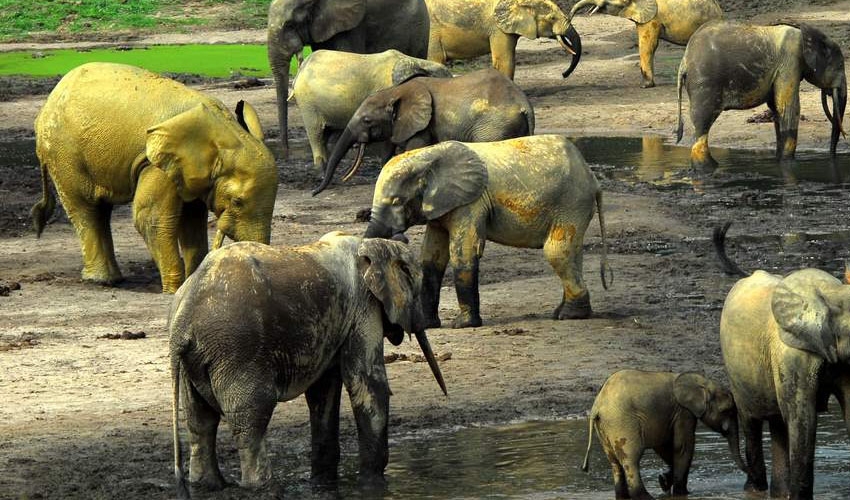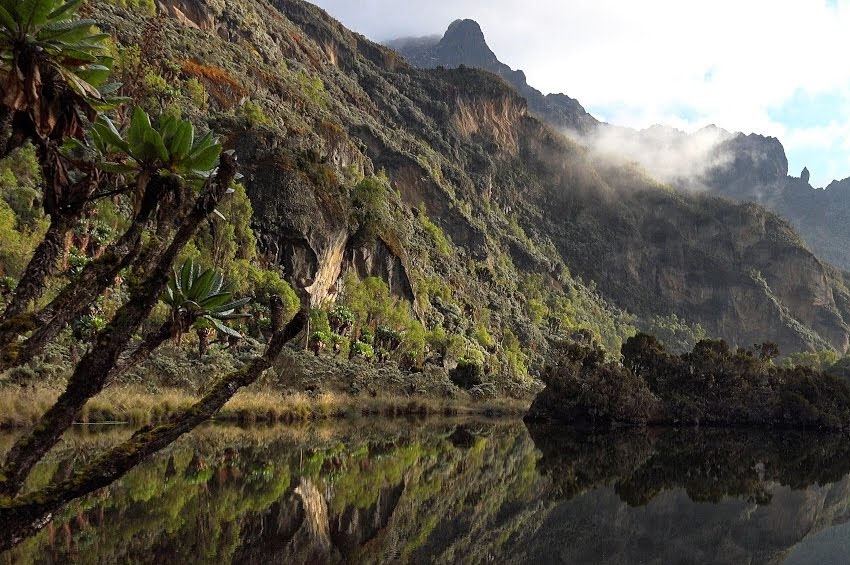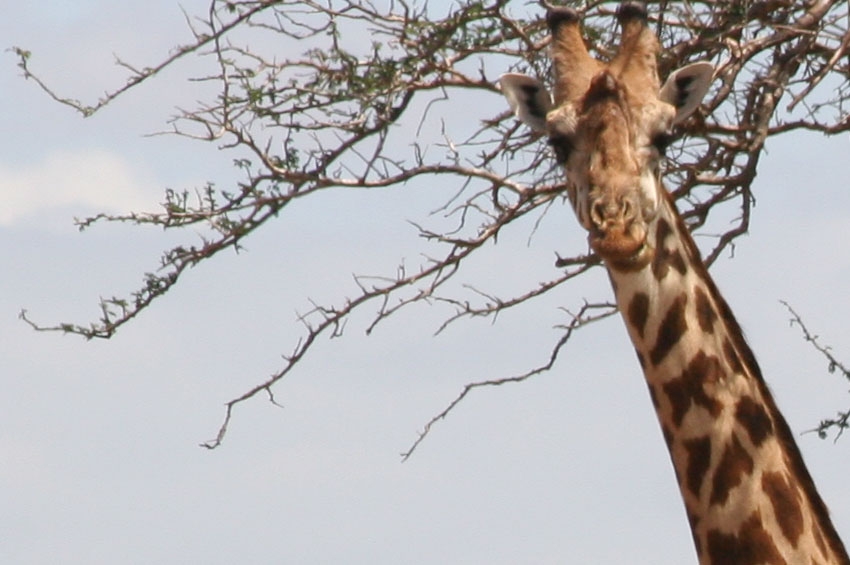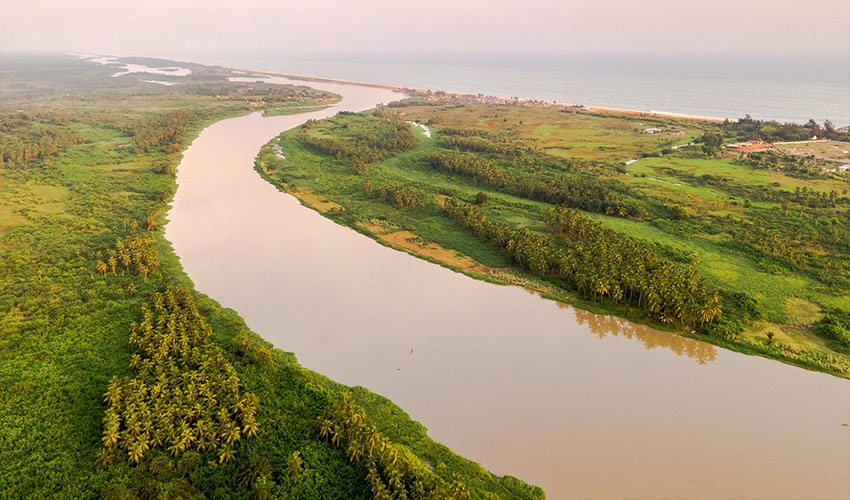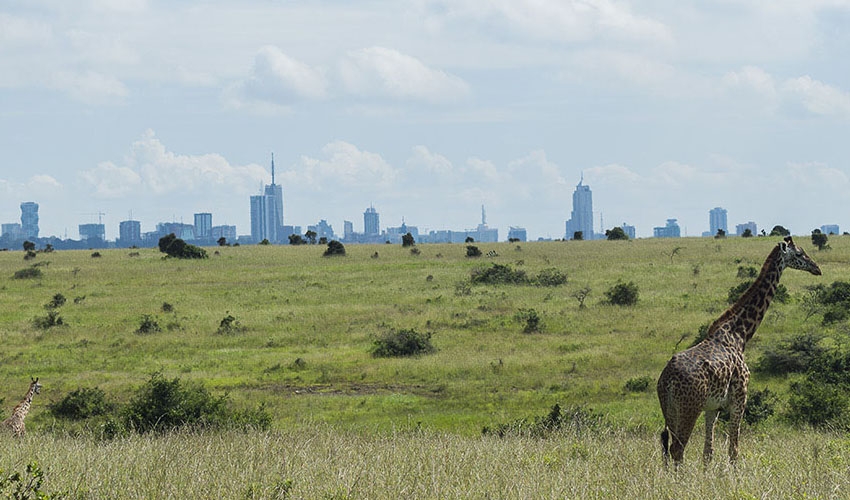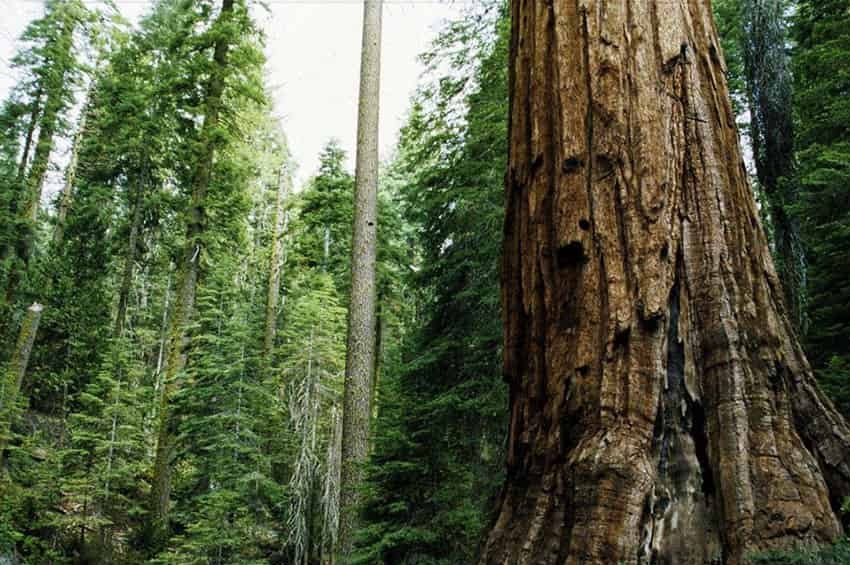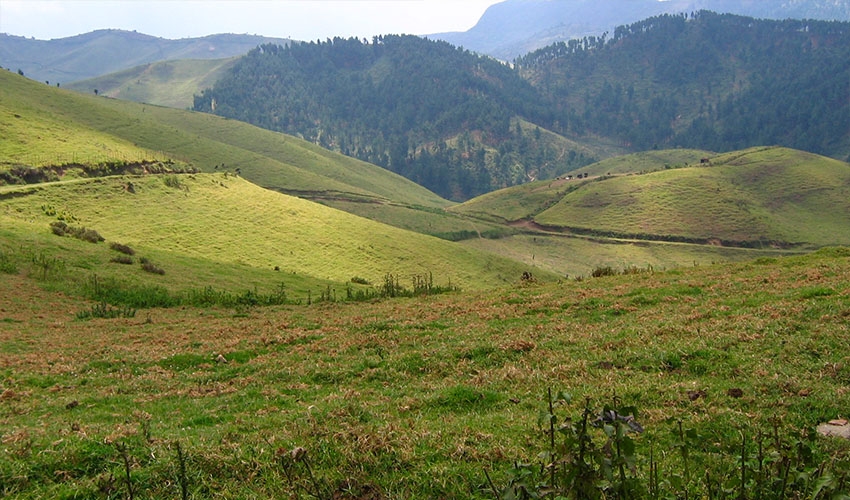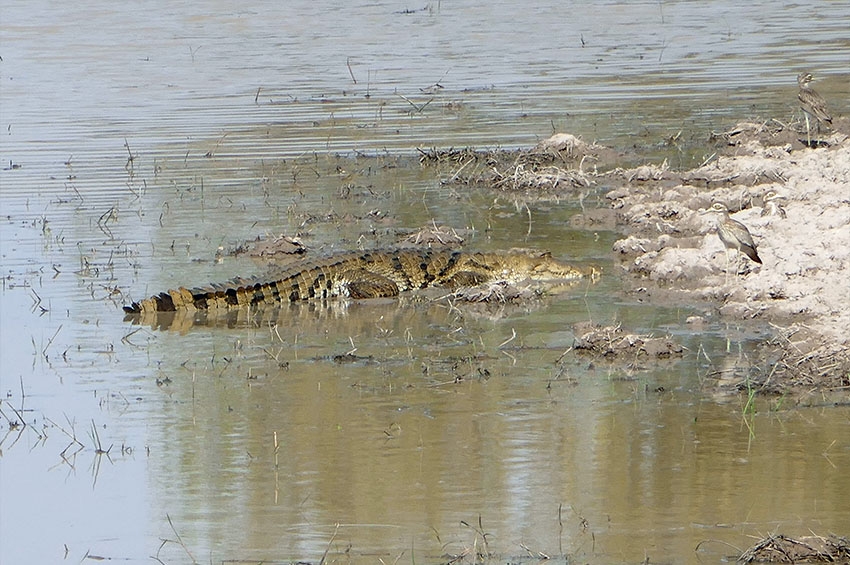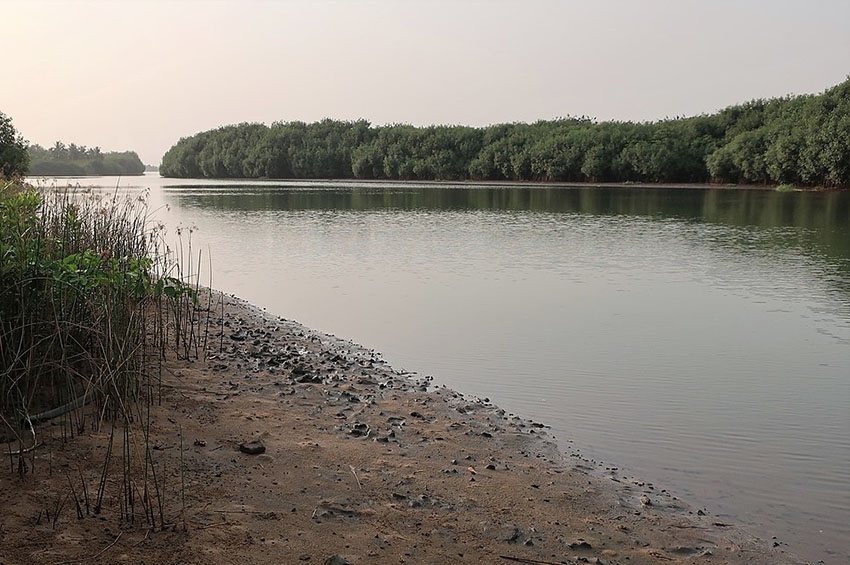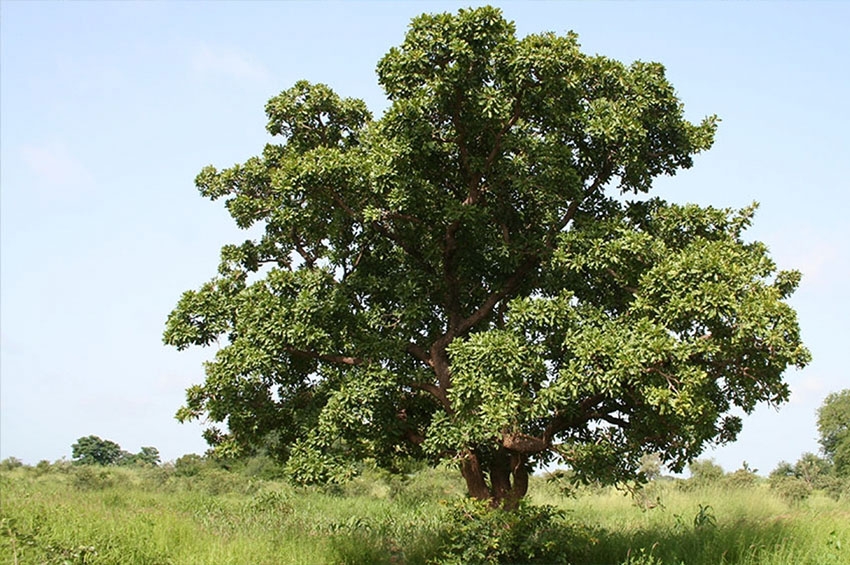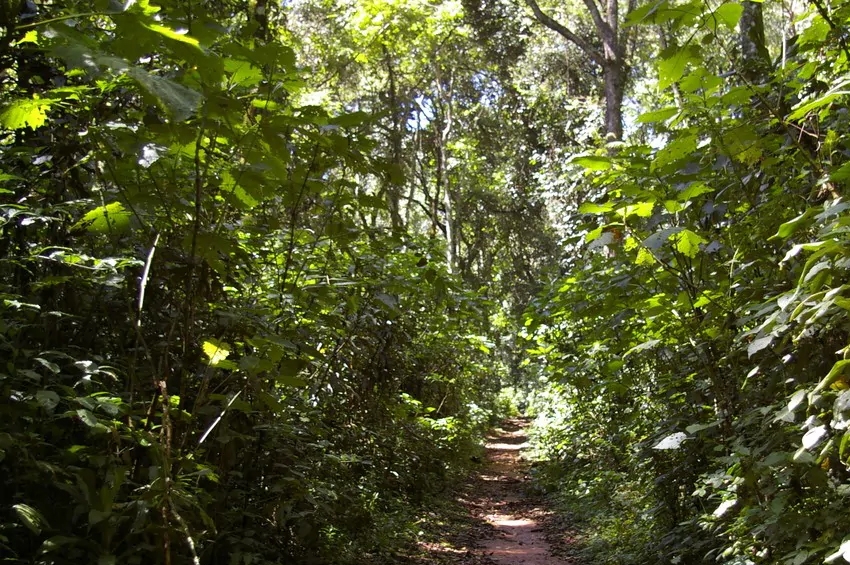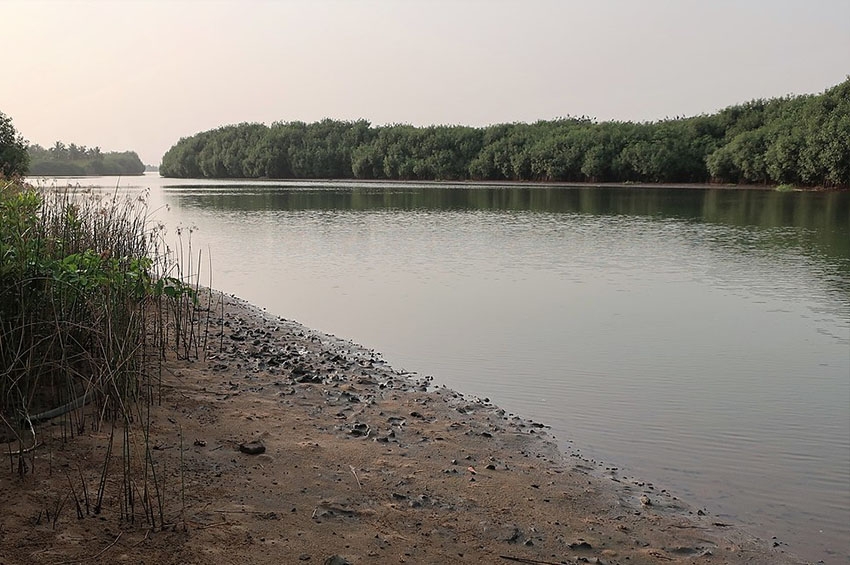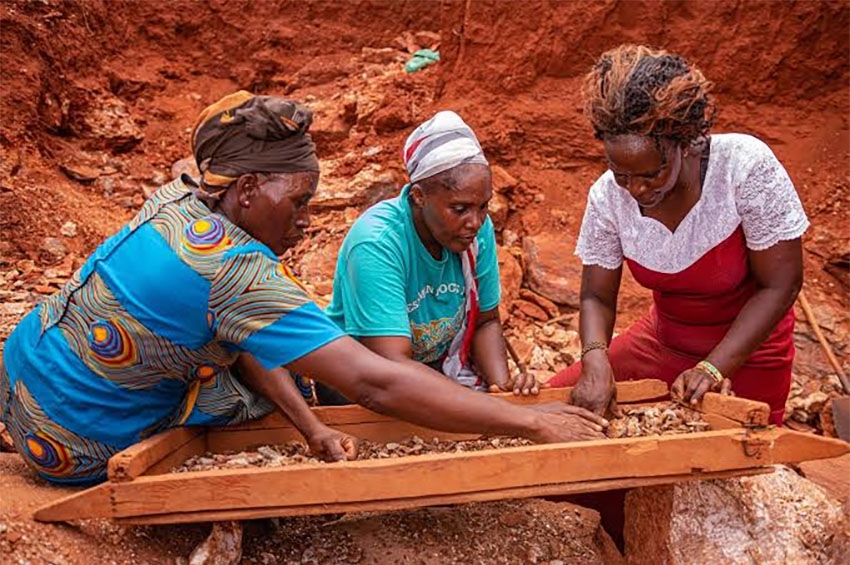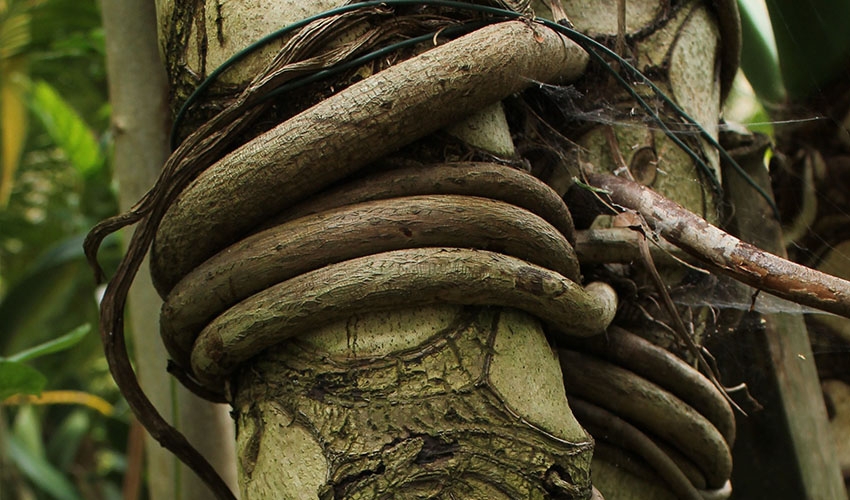The storied ravishingly magnificent “Mountains of the Moon” tower and skirt through the districts of Kasese, Kabarole, Ntoroko and Bundibugyo; and their rugged contours, from afar, stand in silhouettes against the sky and clouds, almost in complete dazzling mystique fashion. These sacred picturesque mountains, of the showery ambience, are a motely of nature’s marvels – flora and fauna. Some parts of the land are enshrouded in luxuriant vegetation like the bamboo forest, Afro-montane forest, ericaceous forest, and a cluster of others. The rocks, or some of them, are smothered in mosses and lichens and those naturally denuded of any vegetation are also common with a few pockets of Helichrysuml scrub lobelia, Dendrosenencio and runssoroensis. Underneath the eaves of some of these rocks, birds like the Alpine Swift often nest, and they croon and twitter on a nightly routine, as if calling out the Rwenzori pantheon.
Guy Yeoman, a twentieth century explorer and author of The Quest for the Secret Nile, in his enunciation of the Rwenzori Mountains, gave a broader perspective when he said,
“The all-pervading cloud produces rainfall and drenching mists that are immutable. The consequences are vegetation so strangely prolific that progress is almost intolerably difficult; a ground surface that is a soaking sponge; and a universal wetness that becomes icy cold as one ascends.” (Guy 1989, p. 8)
Henry Morton Stanley, a nineteenth century Welsh journalist and explorer, was on his part emotively eloquent about the Rwenzori as,
“Another emotion is that inspired by the thought that in one of the darkest corners of the earth, shrouded by perpetual mist, brooding under the eternal storm-clouds, surrounded by darkness and mystery, there has been hidden to this day a giant among mountains, the melting snow of whose tops has been for some fifty centuries most vital to the people of Egypt.”(Henry 1890, p. 299)
When Henry Morton Stanley graphically described the perpetual mist in the Rwenzori, he could never have imagined that it would have the same effect even after more than a century. In a recent January visit to the Rwenzori, I spent most of the time communing with the richly and strangely prolific vegetation as Guy Yeoman had vividly described it. At first hand, I was wreathed in the piquant redemptive mist, and I savoured every entrancing bit of it. Rwenzori Mountains National Park (RMNP) has a wide altitudinal range rising from about 1600 to 5109 metres above sea level. There are numerous ranges in the park, at the centre of which are six main mountains. These are Mt. Stanley (5109m), Mt. Speke (4890m), Mt. Emin (4798m), Mt. Luigi di Savoia (4627m). And on each of these mountains are several peaks (Uganda Wildlife Authority [UWA] 2016, p. 8). It is indeed no wonder that in 1994, the Rwenzori Mountains were inscribed as a World Heritage Site by the United Nations Educational, Scientific and Cultural Organization (UNESCO). The Rwenzori Mountains National Park covers nearly 100,000 ha in Western Uganda and comprises the main part of the Rwenzori mountain chain, which includes Africa’s third highest peak (Mount Margherita, 5,109m) (Uganda Wildlife Authority [UWA] 2004, p. 2).
A host of flora girdle, and are also found within the Rwenzori. The most striking plants are found above 3000m. These are the giant tree heathers supporting aerial epiphytic gardens of outstanding botanical and aesthetic interest, some of which are unique to the Rwenzoris. Two tree species are considered to be endemic to the Rwenzori; these are Hyperricum bequaertii and Schefflera polysciadia. Seven other species occur only in the Rwenzori and in other montane forest zones in the south-west of Uganda. These are Erica kingaensis, Phillipia johnstonii, Vernonia sp.aff.adolfi-friderici, Ficalhoa laurifolia and Ocotea usambarensis. The Afro alpine zone is home to the most graceful of giant lobelia (lobelia wallastoni) and groundsels (Senecio admiralis). These gigantic species are hallmarks of the Rwenzori (Kizza, 2014, p. 3). In the same spirit, among the other copious forms of vegetation is the Afromontane forest which is dominated by Prunus Africana and Podocarpus. The Mimulopsis (which stretches through the Bamboo forest) and Dendrosenecios along with Carex tussocks which appear through Bigo bog and Bujuku are also quite noticeable.
Ruth Kabuwo, a sprightly woman in her eighties, from the mountain village of Bwamba, expressed her laudatory for specifically the Prunus Africana because of its medicinal values. She stated that since her childhood days, it was used by herbalists when treating chest pains, malaria, stomachache and a number of other illnesses. The fact that this tree is still being used in recent times for the same purposes, in Kabuwo’s view, makes it extremely vital in a society that is suffering the ignominy of environmental degradation.
Rwenzori Mountains National Park is endowed with some animal species of global conservation concern. The Rwenzori/Kivu climbing mouse (Dendromus kivu), the Rwenzori duiker (Cephalophus rubidus), the Uganda clawed frog (Xenopus ruwenzoris) and Bradypodion xenorhium, for example are species of restricted range in the park. They have been listed as threatened UWA 2016 (cited in IUCN, www.iucnredlist.org). The IUCN Red list of threatened animals includes the Rwenzori black-fronted duiker (cephalophus nigrifrons rubidus), the elephant (Loxodonta Africana), L’Hoest’s monkey (Cercophithecus l’hoestii), the chimpanzee (Pan Troglodytes) and the dwarf otter-shrew (Micropotamogale ruwenzorii). Fourteen (14) restricted-range species of small mammals occur in the Rwenzori, six of these are shrews and eight are rodents. Four of the shrews are only recorded in Rwenzori Mountains. Three endemic mammal subspecies are found in the Rwenzori, namely; Rwenzori colobus monkey (Colobus angolenis ruwenzorii), Rwenzori hyrax (Dendrohyrax arboreus ruwenzorii) and Rwenzori leopard (Panthera pradus ruwenzorii). (Henry et al, 2003, p.95).
The presence of these animal species has led to an influx of tourists into the Rwenzori, which in effect has paved way for employment opportunities for the locals. This is seen through companies that provide community based tourism services like Rwenzori Turaco view that operates a camp site, forest walk, hill climbing and are also involved in making crafts. It is also because of the presence of these animals that the need to set up better infrastructure like roads has also become so important. The Bakonzo (the people who have lived in the Rwenzori Mountains from time immemorial) have some cultural beliefs that are very relevant when it comes to the conservation of these species. For instance they have a clan system where each of them is associated with a particular wild animal (totems) and consequently, all members who belong to that clan must not injure or kill such animals. Some of these animals are the chimpanzee, buffalo, leopard and a number of others.
There are thirty four species of reptiles within the Rwenzori Mountains. Nine of these are Albertine Rift Endemics. The Rwenzori three-horned chameleon (Chamaeleon johnstoni), as well as the very rare chameleon (Bradypodion xenorhinus) are confined to the Rwenzori Mountains. Recently, occurrence of the three-horned chameleon is reported to be more widespread within the Montane forest – occurring right from the forest edge up to within the bamboo zone. A temperature rise and accompanying expansion of Montane forest higher up is likely to enable this species colonize the new favorable habitats (UWA 2016, p.26).
The park is one of the world’s Endemic Bird Areas (EBA). There are up to 241 species of birds which is about 27% of Uganda’s total. Close to 177 bird species live in the Afromontane forest and 19 species are endemic to the Albertine rift. The common bird species include the Ruwenzori turaco (Ruwenzorornis johnstoni), Bamboo warbler (Bradypterus alfredi), Shelley’s crimson-wing (Cryptospiza shelleyi) and four sunbird species, (i.e. Cynnyris regius, Nectorinia johnstoni, N. reichenowi and N. stuhlmanni). Other bird species include the dwarf honey guide (indicator pumilio), Grauer’s cuckoo-shrike (Coracina graueri), Lagden’s bush-strike (Maloconotus lagdeni) and ground robin (Cossypha archeri). There are many species in the lower zones but the density decreases with increasing altitude. The species include the Rwenzori turaco, a bright coloured red, green and blue bird with a strident cry (UWA, 2016, p.12). The presence of these birds has similarly helped in boosting tourism in Rwenzori, through which other benefits like employment opportunities for the locals have accrued. In the same regard, clans use totems to conserve many of these birds. Traditionally, the guinea fowl and fire finch are some of the birds that are protected by these cultural beliefs.
About 24 restricted range species of butterflies have been recorded from the Rwenzori Mountains National Park. Two restricted-range species of moths are recorded, namely the Hawk moth (Temmora scheveni) and the Silk moth (Lobobunaea ansorgei). The two species are characteristic of closed canopy forest. Any change in the extent of closed canopy forest is likely to affect them (School of Forestry, Environment and Geographical Sciences, 2013).
The challenges faced in the Rwenzori National Park are manifold. From wildfires especially in the alpine zone, to inadequate awareness on park policies, guidelines and conservation values; from landslides to melting glaciers affecting infrastructure, tourism, trails and traction. There are a number of illegal activities taking place in the park ranging from cutting trees inside the park, illegal entry, unauthorized harvest of bamboo and debarking of Prunus African (which according to Zackalia Bihiru, a resident of Bunyangabo, is due to its timber that is used for making poles for construction and fencing, and its bark, leaves and roots that are used by herbalists to treat illnesses like malaria. Bihiru however fears that the unbridled harvest of the Prunus africana puts its survival in jeopardy). Being a mountainous forested park, the forests work as watershed and protect the water catchment and therefore cutting them exposes the soils to erosion, impacts on the amount of rain received and increases evaporation of surface water which have dire consequences to the communities in the long run (UWA 2016, p. 34).
Wild fires destroy the water catchment and undermine the water retention capacity of the bogs. Fires remain a threat in the alpine zones and bogs due to extreme dry conditions associated with climate change. Floods and landslides, triggered by torrential rains and compounded by melting of snow destroy tourism infrastructure and adversely affect ecosystems (Kizza 2014, p. 15). Global warming being one of the challenges is causing retreating of glaciers, particularly in the tropics. By 1990, glaciers on the Rwenzori Mountains had receded to about 40% of their 1995 record cover. The mountains provide vital water catchments for human and wildlife; such changes could drastically affect wildlife species. (Uganda National Adaptation Programmes of Action [UNAPA], 2007, p. 13).
Goodman Bwambale, an ecologist and tour guide, ascribed all the woes of the Rwenzori Mountains National Park to human activities when he said, “All that is happening is because of human activities like tree cutting, illegal encroachment on the Park land, and many other activities like poaching, which have a ripple effect on how the environment responds, in a sense that often times we are experiencing constant floods and wild fires.”
For all that the Rwenzori National Park is and its environs, it is undoubtedly fit to be conserved before they are relegated into a less convivial atmosphere. In the pursuit of achieving this, the wealth of laws that are in place to address issues that are in relation to the environment, like the Wildlife Act, Cap 200 of 2000 should strongly be implemented, and public awareness about these legislations will also play a pivotal role when dealing with these challenges. Public participation while addressing these issues is also of great importance.
Miriam Muhindo, a local resident of Kasese District says, “The accent should also be put on female participation when it comes to the issues that affect them and the environment they live in. It is not only selfish but also immoral to sideline women when it comes to these issues. So emphasis should also be on their participation if we are to reasonably protect and conserve our environment.”
The Rwenzori can be termed as a fragile environment that needs to be conserved or protected. Its terrains of steep slopes, dense Afro-alpine vegetation, unique flora and fauna all need to be protected against destructive human interference. Conservation is one of those words like development, ecology, and nowadays environment. These words connote the lifeline of human beings and their sustainability and survival (Henry et al, 2003, p. 9).
Reference List:
- Guy, Y. (1989) Africa’s Mountains of the Moon. United States of America: Universal Books.
- Henry, M.S. (1890) In Darkest Africa, London: Sampson Low.
- Henry, O., Joy, T., Charles, B. and Jockey, N. (1998) Rwenzori Mountains National Park, Uganda. Kampala: Department of Geography, Makerere University.
- Kizza, F, 2014, State of Conservation periodic Report for Rwenzori Mountains National Park, World Heritage Property, World Heritage Center, UNESCO, Uganda.
- Uganda National Adaptation Programmes of Action, (2007).
- Uganda Wildlife Authority (2016). Rwenzori Mountains National Park, General Management Plan, 2016-2026.
- Uganda Wildlife Authority (2004). Rwenzori Mountains Conservation and Environment Management Project, 2004-2014.
- School of Forestry, Environmental and Geographical Sciences (2013), Impact of Climate Change on the Species of Restricted Range in Rwenzori Mountains National Park, Submitted to Uganda Wildlife Authority, 2013.


